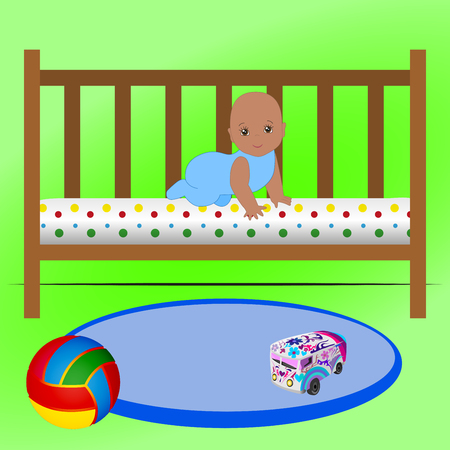Introduction: The Screen vs. Story Dilemma
In today’s fast-paced, tech-savvy world, parents face a unique challenge: finding the right balance between screen time and traditional story time for their babies. With smartphones, tablets, and televisions becoming an everyday part of American life, it’s easy to see why screens often capture our attention—even the littlest ones aren’t immune. At the same time, classic story time with books remains a cherished bedtime routine for many families, passed down through generations. As caregivers, we all want what’s best for our children’s development, but deciding when to hand over a tablet versus opening a picture book can feel overwhelming. This article dives into the heart of this modern dilemma, exploring how these choices impact your baby’s growth and why reading books might offer more than just a cozy bonding moment.
2. The Science Behind Baby Brain Development
From the moment a baby is born, their brain is rapidly developing, forming over a million new neural connections every second. These early years are a critical window for cognitive and emotional growth, and the experiences babies have during this time shape how their brains are wired for life. While screen time may offer colorful images and sounds, it lacks the rich, interactive stimulation that reading provides. When you read to your baby, you’re doing much more than just telling a story—you’re building the foundation for lifelong learning and healthy relationships.
How Reading Shapes the Brain
Reading with your baby activates multiple areas of the brain simultaneously, supporting language development, memory, attention span, and emotional bonding. As you share stories and point to pictures, your child hears new words, sees facial expressions, and feels safe in your presence—all of which help them make sense of the world.
The Benefits: Reading vs. Screen Time
| Area of Development | Story Time (Reading Books) | Screen Time (Digital Devices) |
|---|---|---|
| Language Skills | Expands vocabulary through conversation and storytelling | Limited two-way interaction; fewer opportunities for language growth |
| Cognitive Growth | Strengthens memory, problem-solving, and comprehension | Passive consumption; less mental engagement |
| Emotional Connection | Builds secure attachment through shared moments | Minimal caregiver-child interaction |
| Attention Span | Encourages focus and listening skills | Fast-paced visuals can shorten attention span over time |
The Power of Shared Experiences
Pediatricians across America recommend daily reading as one of the best ways to support your child’s brain development. Unlike screens, books invite back-and-forth communication—babies coo, gesture, or point while adults respond with encouragement. These small interactions spark neural growth and teach babies how to connect with others emotionally. In short, sharing stories isn’t just about learning words—it’s about laying the groundwork for lifelong curiosity and emotional well-being.

3. The Downsides of Screen Time for Infants
Recent studies have raised important concerns about the impact of excessive screen time on babies’ development, especially in their earliest years. Unlike traditional story time, where caregivers interact directly with their infants, screen-based activities often lack the crucial elements of human connection and responsive communication. Research shows that when infants spend more time in front of screens—whether it’s smartphones, tablets, or TVs—they miss out on valuable face-to-face interactions that are essential for language growth. In fact, according to the American Academy of Pediatrics, too much screen exposure before age two is linked to delays in speech and language skills. Babies learn best through real-life exchanges: watching your facial expressions, hearing your voice, and responding to your words all help develop their attention span and social understanding.
Additionally, excessive screen time can interfere with an infant’s ability to focus and sustain attention. Unlike reading a book together, which encourages shared attention and engagement, screens often provide fast-paced visuals and sounds that can overwhelm a baby’s developing brain. Over time, this may make it harder for young children to concentrate on slower-paced activities like reading or playing with others. There’s also growing evidence that heavy screen use early in life can affect how children relate to others socially. Babies who spend more time looking at screens may struggle with picking up on emotional cues and building strong connections with caregivers and peers.
Ultimately, while screens are sometimes unavoidable in modern family life, it’s important to recognize their potential downsides for infant development. Prioritizing story time over screen time gives your baby the best chance to build a strong foundation in language, attention, and social skills—setting them up for future success both in school and in life.
4. Why Story Time Matters
Story time offers a world of benefits that go far beyond simply keeping your baby entertained. Reading aloud to your little one creates special moments that foster emotional closeness, support brain development, and lay the foundation for lifelong learning. Let’s explore why story time is so important compared to screen time.
Bonding Through Books
When you read to your baby, you’re not just sharing a story—you’re building a relationship. The physical closeness, the sound of your voice, and the shared focus all help deepen your emotional connection. This secure attachment is essential for healthy development and helps your child feel safe and loved.
Language Development
Reading aloud exposes babies to a rich variety of words and language patterns that screens can’t always provide. As you point to pictures, name objects, and talk about the story, your baby learns new vocabulary and begins to understand how language works. Research shows that children who are read to regularly have stronger language skills when they start school.
Sparking Imagination
Unlike passive screen viewing, story time invites babies to use their imagination. They picture scenes in their minds, anticipate what happens next, and learn about emotions through characters’ experiences. This imaginative play is vital for creativity and problem-solving later in life.
Providing Emotional Security
The routine of reading together offers comfort and predictability, especially at bedtime or during transitions. Hearing the same stories again and again can be soothing for babies and helps them process feelings in a safe environment.
Comparing Benefits: Story Time vs. Screen Time
| Benefit | Story Time | Screen Time |
|---|---|---|
| Bonding with Caregiver | High: Encourages close interaction | Low: Often solitary or passive |
| Language Skills | Rich verbal engagement | Limited exposure to quality language |
| Imagination & Creativity | Stimulates imagination actively | Tends to present fixed images & ideas |
| Emotional Security | Promotes comfort & routine | Lacks personal connection & routine |
Choosing story time over screen time gives your baby the best start—strengthening their mind, heart, and your special bond together.
5. From Screen Habits to Reading Routines
Transitioning from screen time to story time can feel overwhelming in today’s digital world, but building a consistent reading routine is entirely possible with a few practical steps. Here are some strategies to help your family embrace books and minimize unnecessary screen exposure:
Make Reading Part of Your Daily Schedule
Just like mealtimes or bedtime routines, designate specific moments each day for reading. This could be after breakfast, before naps, or as a calming bedtime ritual. Consistency helps your baby anticipate and look forward to these special moments together.
Choose Age-Appropriate Books
Select sturdy board books with bright pictures and simple stories for infants and young toddlers. As your child grows, introduce interactive books with textures, flaps, or rhymes that invite participation. For preschoolers, pick stories that reflect their interests—animals, vehicles, family adventures—and encourage them to turn pages or repeat familiar phrases.
Create a Cozy Reading Environment
Set up a comfortable reading nook with pillows and soft lighting. Keep a small basket of books within easy reach so your child can explore independently. By making books accessible and inviting, you reinforce the idea that reading is both fun and rewarding.
Minimize Unnecessary Screen Time
While some screen time may be unavoidable, especially for video calls with relatives or educational content, aim to keep it brief and purposeful. The American Academy of Pediatrics recommends avoiding screens (except for video chatting) for children younger than 18 months and limiting high-quality programming to an hour per day for older toddlers. Instead of reaching for a device during downtimes, offer a favorite book or initiate a storytelling session.
Lead by Example
Your baby learns best by watching you. Let them see you enjoying books and choosing reading over scrolling. Share your excitement about stories, use expressive voices, and ask questions—even if your little one can’t answer yet. These habits nurture curiosity and language skills that will last a lifetime.
6. Creating Lasting Memories: Books Beyond Babyhood
Reading together is more than just a way to support your baby’s early development—it’s the beginning of a lifelong tradition that can shape your family’s story for years to come. Unlike screen time, which often becomes a solitary or passive activity, sharing books creates powerful memories and deepens the bond between parents and children. Even as your little one grows beyond the baby stage, those moments spent reading together foster a love of learning, spark curiosity, and encourage meaningful conversations. In many American families, bedtime stories become cherished routines, passed down from generation to generation. By making reading an important part of daily life—not just in infancy but throughout childhood—you’re helping your child build not only literacy skills but also emotional connections and a sense of belonging. Story time transforms into family time, supporting social skills, empathy, and imagination in ways that screens simply can’t match. Embracing books as a family tradition sets the stage for lifelong learning and close relationships, making every story shared a memory that lasts well beyond babyhood.


